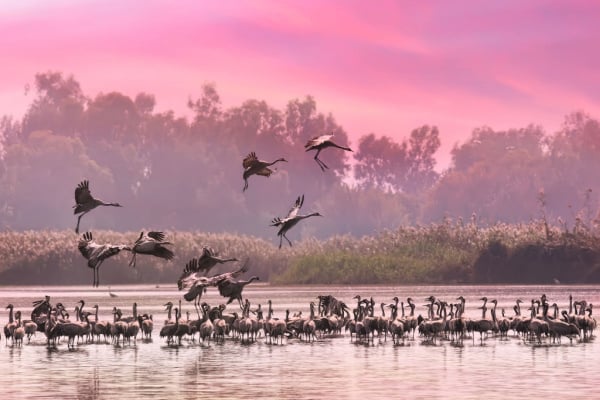A sampling of great Israeli hikes that let people in strollers or wheelchairs fully join the fun.
By Brian Blum, Israel21c
When our first grandson was born a little over a year ago, hiking in Israel suddenly required a new approach. Eventually, we hope little Ilai will be a trail maven on his own two feet or comfortably ensconced in his baby hiking backpack.
But until then, Ilai, his parents and doting grandparents set out on a search for the best stroller-friendly and accessible hikes in Israel.
That means, at a minimum, a flat path without any major rocks to climb over and, ideally, a smooth paved trail to make it easier on the stroller’s (or a wheelchair’s) wheels.
We found paths in abundance. Here are 15 of our favorites.
Park HaYarkon
Slightly larger than Central Park in New York and double London’s Hyde Park, Park HaYarkon is an urban gem, paralleling the Yarkon River from the outskirts of Tel Aviv to the Tel Aviv Port.
The entirely paved path passes by manicured lawns, sports facilities, six gardens (including a botanical garden and a large rock garden), as well as two outdoor concert venues.
While you can rent bikes at any of Tel Aviv’s Tel-o-Fun stands, the bike rental shop at the eastern end of the park has much better transport options.
Appolonia National Park
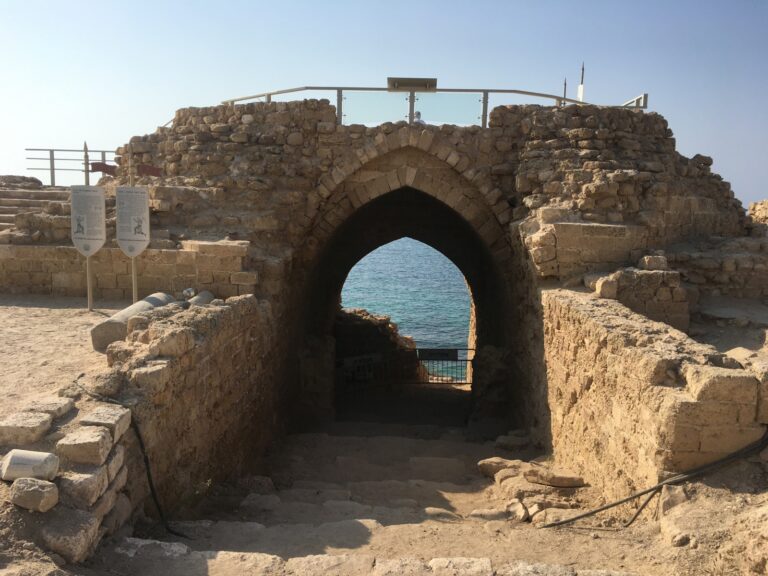
The ruins of hundreds of years of settlement – Roman, Byzantine, Muslim, Ottoman – are perched on a cliff overlooking the Mediterranean Sea just north of Herzliya.
After you pay your entrance fee, you can spend an hour and a half walking along a well-marked, mostly dirt path with no rocks or major climbs, exploring the ancient citadel, moat, storehouses and bridges.
Appolonia’s attractions are not as extensive as those in Beit She’an or Caesarea, but it’s a lot closer to Tel Aviv. The park closes at 4pm in the winter. Access to the beach is via a separate but nearby entrance.
Hof HaSharon Beach Reserve
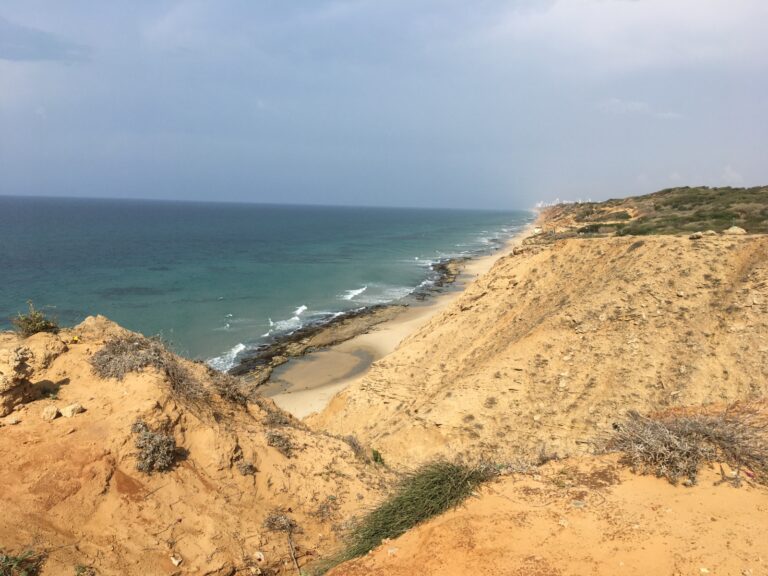
Slightly north of Appolonia, this national park with no entrance fee runs between Kibbutz Shefayim to Kibbutz Ga’ash. To get there, type “Shefayim Nude Beach” into Waze but don’t worry – when you see the sign for the Israel Trail, turn right instead of continuing to the beach.
Inside the park, follow the signs for the Cliff Trail, which has phenomenal views from 40 meters above the sea. There are well-appointed wooden sitting areas and signage explaining various flora and fauna. Return on the Iris Trail, which is filled with flowers, especially in the spring.
Ariel Sharon Park
Ariel Sharon Park, named after the late prime minister, sits on top of the former Hiriya garbage dump. At the beginning of the 21st century, the whole area was transformed into an environmental rehabilitation project, filled with eco-friendly projects and tours.
The views of the Gush Dan region are stunning. There are both bike paths and accessible hiking trails. The park is huge – the entire town of Bat Yam could fit within its borders!
Hungry after your hike? There’s a café right at the center of the park. The visitors center has a multimedia display telling of the Hiriya’s transformation. Free guided tours are offered on weekends.
Neot Kedumim
Neot Kedumim is a human-crafted biblical landscape reserve that aims to recreate the physical setting of the Bible “in all its depth and detail, allowing visitors to see life as it was lived by our ancestors 3,000 years ago.”
The easy walking and strolling paths take you past Abraham’s Tent, made of handwoven goat hair; an educational exhibition of different sukkot (including one on a boat, one on a camel and one in a horse-drawn cart); and a 1,200-seat amphitheater.
Signs are posted throughout with relevant biblical quotes in Hebrew and English. You can hike on your own or join a guided tour, which includes operating an oil press and working with a hand mill.
JERUSALEM AREA
Jerusalem Ring Path
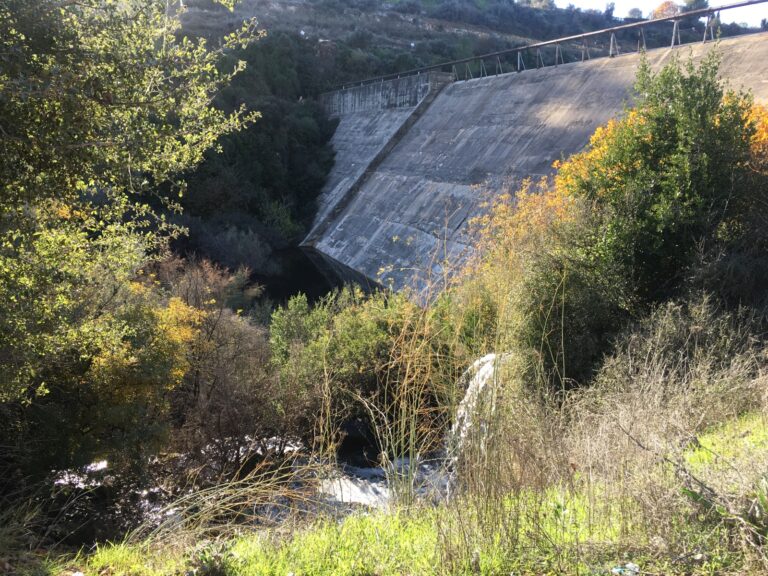
The Jerusalem municipality is proud of the 40-kilometer bike path built to ring the city. Most of the path is either mixed use (bikes and pedestrians) or there’s a walking path paralleling the bike one. You can jump in at different points; they’re nearly all paved.
If you park at the Kraft Family Sports Center, near Ramot, you’ll walk in the direction of Einot Telem and Motza. If you park outside of Ein Kerem, you’ll walk towards the former Beit Zayit reservoir with its pretty picnic spots and stunning scenery. Also part of the 40-kilometer ring path is the entirely paved Park HaMesila, which runs from the First Station complex past the Biblical Zoo and Israel Aquarium to Ein Lavan.
Har Eitan
Perhaps the most popular hike in the Jerusalem area, this 7-kilometer loop circles Mount (Har) Eitan. You can walk it in two and a half hours (bikes will whizz by you). The trail is dirt, not paved, but smooth. The only tricky part is the end of the hike, which entails a steep climb up to the parking lot. (If you have two cars, you can park one down below and skip the schlep.)
Har Eitan is not particularly shady, but the payoff is the views – a 360-degree panorama, from the hills and small moshavim toward Modi’in and Tel Aviv to the west, to the large campus of Hadassah Medical Center-Ein Kerem to the east.
Nahal Kisalon (Kisalon Stream)
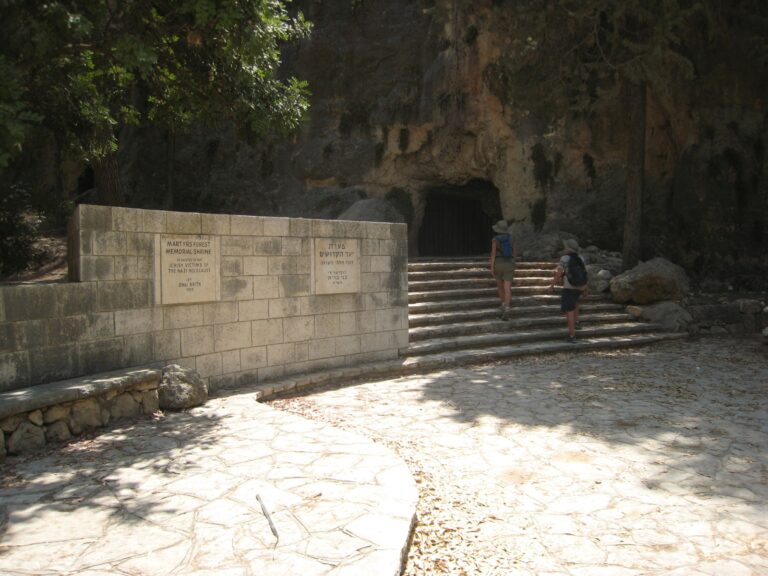
This easy walk on the Israel Trail is a wide dirt road with tall canyon walls on either side. It starts at the gas station at the Shoeva junction. (You can extend the trek by parking at Kibbutz Tzuba – however you hike it, this is a two-car hike.) The hike ends in the Martyrs Forest, established by B’nai B’rith to commemorate Holocaust victims, not far from the Eshtaol junction on Highway 38, which is where you should park your second car.
Bonus: At the Eshtaol end of the hike is the kosher boutique Flam Winery, where you can buy a bottle or two to reward yourself for a trek well done. It’s 2.5 hours from Shoeva, 3.5 hours if you start at Tzuba.
Gazelle Valley
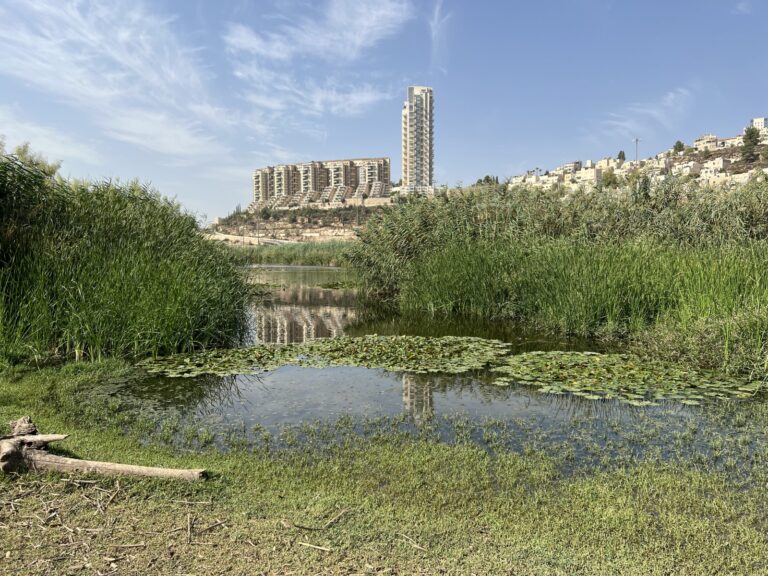
This is the story of a park that almost wasn’t. Leased to two Jerusalem-area kibbutzim for 50 years, this piece of land in the southern part of the city was filled with orchards. When the lease expired, developers eyed the area. One problem: A herd of gazelles still lived in the open space. A protracted battle was won in 2012 by the animal lovers and thus Gazelle Valley was born.
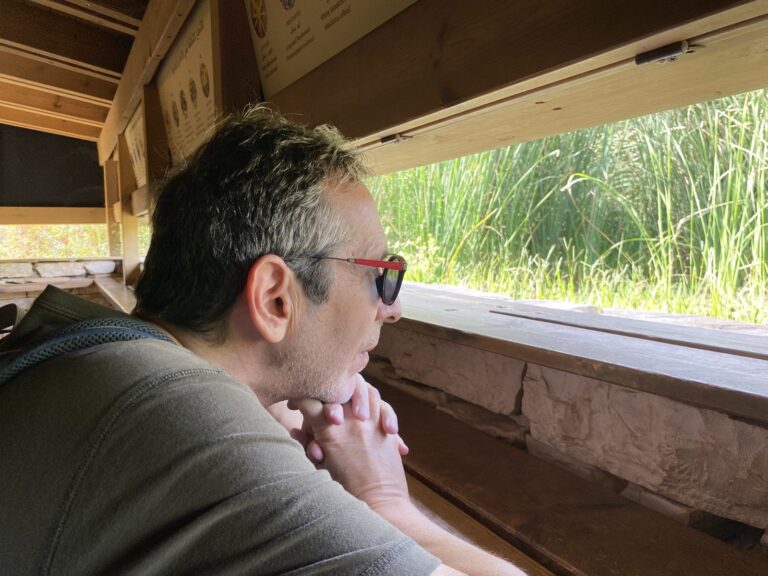
The 64-acre park includes dirt walking paths that are easy to traverse, pergolas for shade, protected bird watching blinds, and, of course, the gazelles. The park is closed at night and no gazelle-chasing dogs are allowed in. The Eretz Israel Mountain Gazelle is an endangered species, with only 5,000 left in the wild.
Tzora Forest
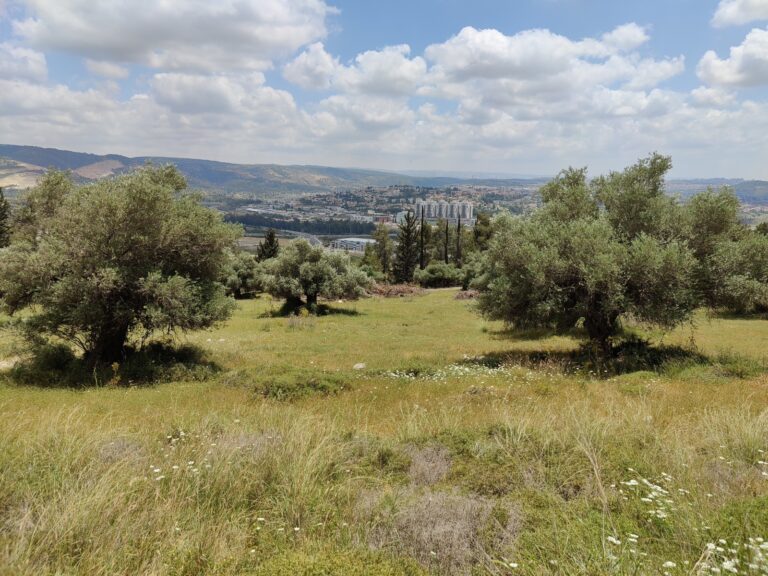
This hidden gem can be hard to find: Drive past the Beit Shemesh industrial zone until the parking area marking the entrance to Tzora Forest. You’re in the vicinity of the Tzora Sculpture Route (Derech HaPsalim), although you won’t see many statues on this hike.
Follow the black trail to the red trail to the green one for a circular route. Shimshon’s Grave is a site of religious significance in the area, but it’s beyond the dirt and paved path. Nor is this hike entirely flat but, other than one tricky area with some rocks to navigate, it’s mostly stroller-friendly. You may even see a herd of cows wander by.
NORTH
Hula Lake
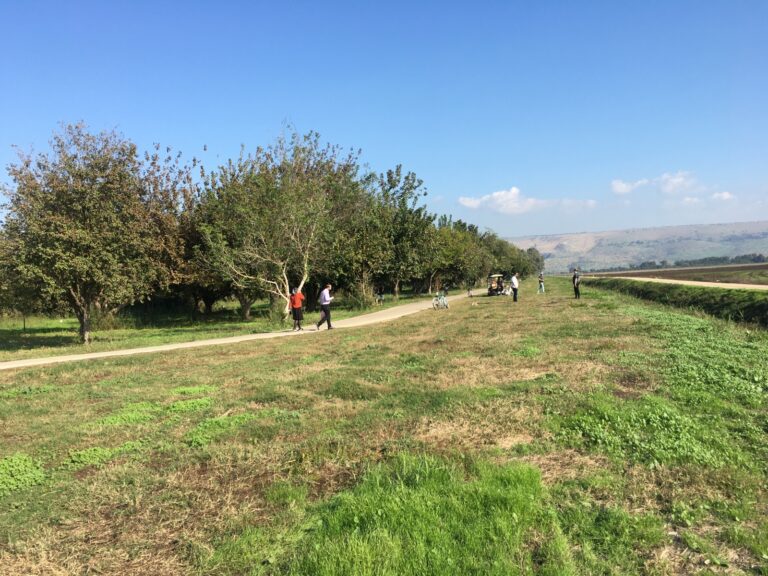
Hula Lake, drained in the 1950s to create agricultural fields, has since been partially restored to its original watery self. That’s been a boon for half a billion migrating birds that visit every winter; Agamon Hula Park is one of the top 10 birdwatching locations in the world.
The birds – including magnificent cranes and pelicans – attract thousands of human visitors every March and November, but the nature is worth visiting at any time of year. The flat, largely paved path around the lake is 8.5 kilometers in length and you can walk, cycle or rent a motorized golf cart. There are observation points scattered throughout. You’ll spot turtles, beavers and water buffalo.
Nahal Tzipori (Tzipori Stream)
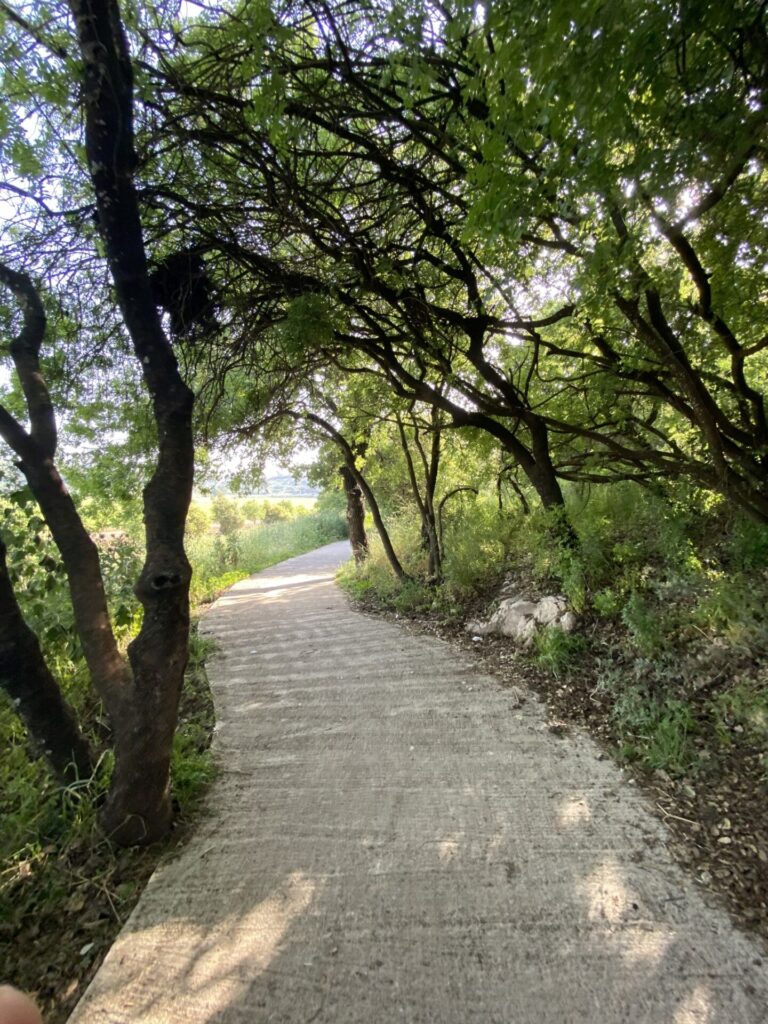
Touring Nazareth for its cultural and culinary attractions? Top it off with a stroller-friendly accessible walk along nearby Nahal Tzipori which starts, as its name suggests, near Moshav Tzipori (set Waze for the Coffee Solelim food truck) and continues to Ein Yivka, one of the area’s larger swimming holes.
The paved promenade parallels the stream. It’s a one-way route so either park a second car at the end or double back. While you’re in the area, don’t miss Tzipori National Park, with its audiovisual presentation and extensive archeological ruins (Roman theater, ritual baths and the famous “Mona Lisa of the Galilee” mosaic).
Tel Dan Nature Reserve
If you like hiking along the water, there are two trails at Tel Dan, almost as far north as you can go in Israel. The longer 2-km trail passes by waterfalls, wading pools, a pretty flour mill from the British Mandate period, and the “tel” from which the area gets its name – a layered archeological excavation of the ancient city of Dan.
But for the purposes of this round-up, take the shorter trail, which is wheelchair- and stroller accessible. At various points, you can dip your feet in the river but beware: The Dan’s water comes from melting snow on the Golan Heights, so it can be frigid even in the summer.
Nahal Snir (Snir Stream)
Not far from Tel Dan is Nahal Snir, which also comes in two versions – a long trail (90 minutes) that goes through water and a 15-minute stroller trail that passes by a wading pool and a cute little waterfall.
Start at the entrance to the Hatsbani Nature Reserve (it’s on the Israel Trail, so there’s an entrance fee). The accessible path is the red trail. When you’re done, treat yourself to a fabulous fish meal at Dag al HaDan, with its tables set between the rivulets of the stream.
Jordan River Park
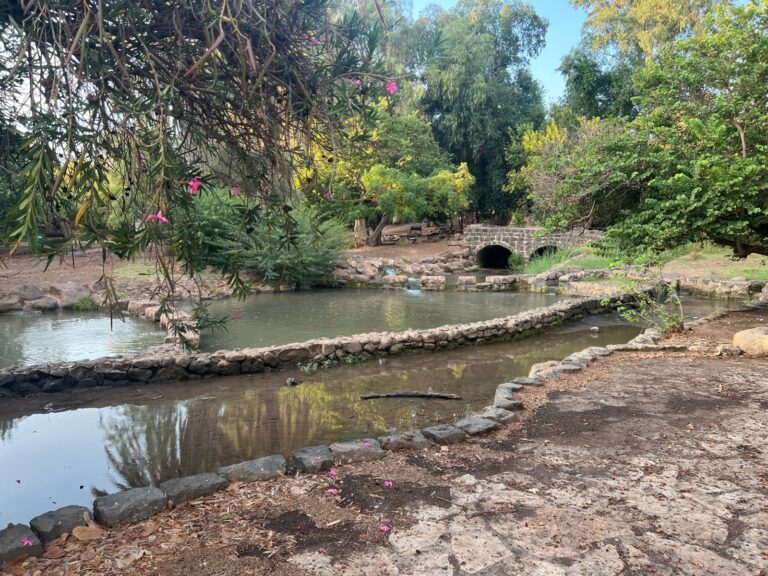
Located at the northern tip of the Sea of Galilee, this park has lots of places to picnic plus some decent jungle gyms for the kids. The four walking trails range in length from 500 meters to 3 kilometers. The trail to the flour mill is a good place to start, at just 1 kilometer.
There are tree-tunnels to navigate and access to the river itself. The site, which includes the Bethsaida archeological ruins (not stroller friendly), costs 60 shekels per car for day use, 100 if you want to camp overnight, so try to make the most of it — not just an hour, as happened to us when we arrived too close to closing time.
